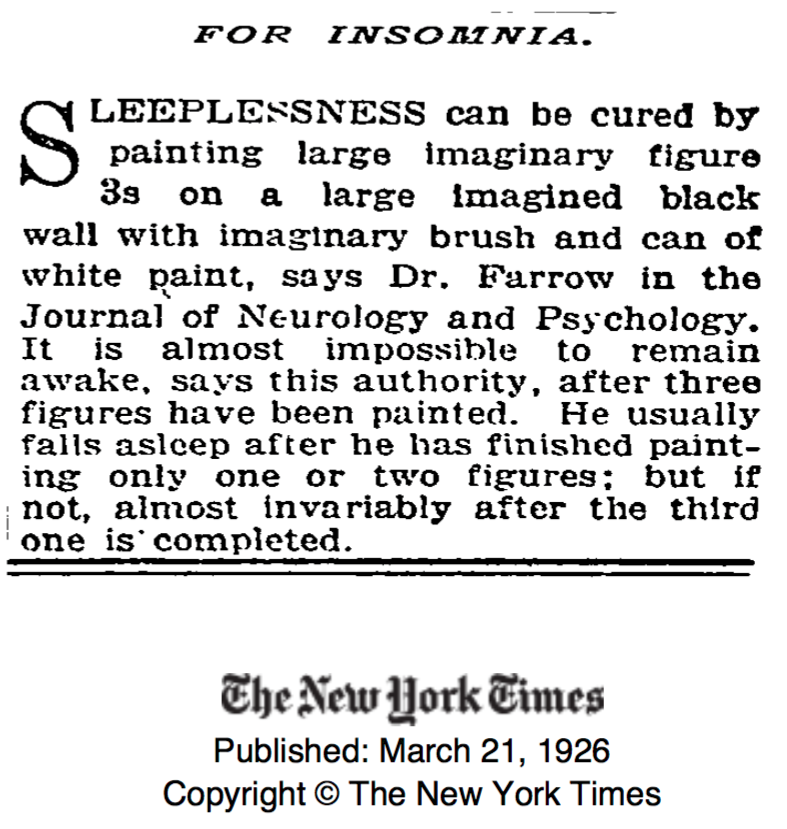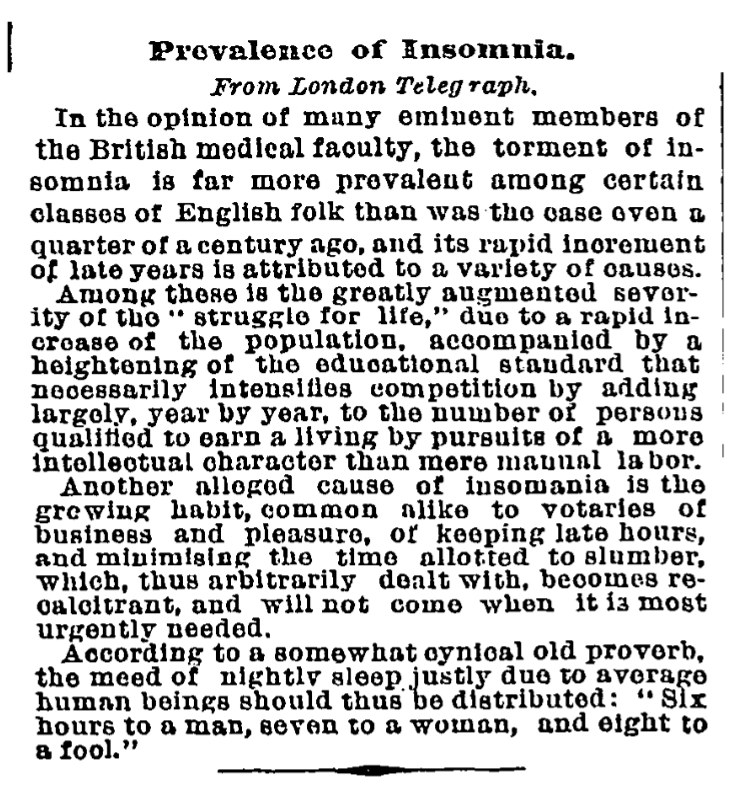I have had insomnia since I was a kid. It wasn’t so bad when I was young, but as I got older, it became more and more troublesome. I spent eight years in the US Air Force, and I got degrees at both Arizona State and Stanford. I worked on NASA missions to the outer planets and Star Wars projects. I got divorced, and suffered through my daughter’s disappearance and eventual reappearance. I got laid off from my job. Through all this, I had insomnia. I would wake in the night, some times two or three times, and not be able to get back to sleep without a struggle. I tried counting sheep, counting backward from one hundred, controlled breathing, meditation, concentrating on pleasant thoughts. I made my bedroom dark as possible, and removed the clocks. Nothing had a measurable impact.
I didn’t drink or smoke, and during the later years, I took three Benadryl capsules at bedtime and two the first time I woke. Later while teaching astronomy at a university, I took Ambien. It worked some but didn’t keep me asleep all night, and when I woke, I still couldn’t get back to sleep. When I went off it, I had sintillating sarcoma for a couple of weeks and had more trouble than ever trying to get to sleep.
In 1996, I moved into an old home my grandfather had built and started writing full time. I then used the hours of insomnia to my beneffit. I wrote from two to three hours in the middle of the night, every night. But I was ruined during the day, and would have to nap for an hour or two in the afternoon.
During all this time, I read every article on sleep I could get my hands on. It seemed that no one else was sleeping either, so why should I think I could solve my insomnia problem?
But then one day while looking into an interesting phenomena I had experienced while close to sleep, I came upon a topic called hypnagogia. Hypnagogia is the name for the state between being awake and being asleep. I didn’t even know that it was considered a separate state. I learned that it was also called sleep onset by researchers, who had worked on the subject. I learned about sleep propensity and electrochemical deafferentation. I learned about the different brain waveforms that are peculiar to that state, which lasts only five or ten minutes for a normal person going to sleep.
I also learned that this hypnagogic state is used by really smart people for creativity. That is where they get their earth-shattering ideas. I learned that most writers use it for help writing novels and short stories.
Old people have more trouble with sleep than do younger people, and I certainly experienced that degradation in sleep quality as I got older. Even after I retired, I worried about the past. I worried about problems I had growing up, my problems with my father. My past loves and my divorce. I worried about my grown kids. I worried about doing my income tax. I worried about my health and had long imaginary arguments with my doctors. As I got older, I was getting less and less sleep and was napping more and more in the afternoon.
But now, only a couple of years later, I get eight to ten hours sleep every night. I take a nap in the afternoon sometimes, but it is by choice and doesn’t generally affect sleep that night. I wake two to three times each night because of a dry eye condition and acid reflux, and yet I use eye drops or pop an antacid and go right back to sleep. My bedroom windows have light from street lamps streaming in, and I use my bedroom for my office with my computer right beside my bed. I have a bright blue light on a printer that that lights up my ceiling like a full moon. I have books all around just in case I want to read. I check the time with my iPhone every time I wake. I have planes flying overhead throughout the night and cars I can hear on the street out front. It rains frequently in Atlanta, and I can hear the drops pounding the room and hear thunder off in the distance. Still, I can easily get back to sleep if I wake and get eight to ten hours of sleep every night, even though I’m seventy-four years old. Sleep hygiene is no longer a concern for me.
How do I do it?
Having discovered that hypnagogia was an actual state, and that it had several aspects that could act as diversions to keep me from going to sleep, I started work on a technique to control my thoughts. I also realized how silly was the notion that we “fall’ asleep. Gravity had nothing to do with it. Having practiced good sleep hygiene for decades with little if any favorable results, I knew that sleep wasn’t come for me and that I had to go get it. I realized that sleep professionals knew nothing about the actual process of going to sleep. They knew nothing about sleep onset or hypnagogia. Research scientists said as much. They said that someone needs to do research on it, but no one ever does. This is such an obvious omission that you really wonder if pharmaceutical companies don’t guide research away from sleep onset and toward providing medication so that they can make money off of the condition.
I found a way to put myself to sleep in five to ten minutes every time I wake. It is a simple thought control technique that leads me toward sleep. Usually, I can put myself to sleep in under a minute. Once you understand the nature of hypnagogia, the reason so many people have insomnia becomes obvious. And the solution is so easy that it only takes a few minutes to learn.
*
In my next blog post, I’ll go through what happens during a successful trip through hypnagogia on your way to sleep. It is surprisingly simple, but if you don’t know how to avoid the hazards along the way, you can end up spending a couple of hours traveling a dead-end road.



